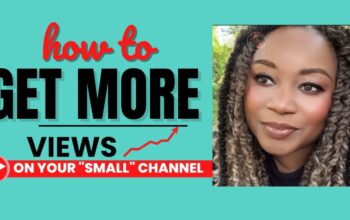Guest Post
A recent study on The Statistics Portal have shown that the average American spends 11 hours per day on digital devices with over three hours spent on social media sites. In most cases, consumers are not being paid for their time.
Facebook has set a worldwide record making $2.24 billion in revenue per user in Q2/2014, and in the US and Canada, that number nearly tripled to $6.44 (Facebook). With nearly 1.3 billion users worldwide (Users), how much has Facebook paid back their users? How much has each of their users made for their time spent in giving Facebook their wealth?
Jenny Q. Ta, Founder and CEO of Sqeeqee.com, the first-ever Social Networthing® site designed to allow users to monetize their daily social media activities in unprecedented ways, gives six ways social media giants like Facebook, are robbing consumers blind every day:
1) Where there is smoke, there is fire. While Google may not be considered a social media network, Google+ is and is packaged under the Google brand. With pending cases like Hagens Berman filed against Google and other claims that Google is taking hundreds of thousands of dollars from AdSense accounts, how can consumers not be thinking twice about what Google actually pays their users? Since Google doesn’t disclose the number of AdSense or AdWords users they have, consumers are not able to tell how much Google has taken from them. Google’s net worth stands at approximately $350 billion dollars, you would think with that kind of money they could at least give consumers a legitimate way to monitor their use in comparison to what they’re being paid (if any at all).
2) Don’t let history repeat itself. It is obvious that time is money. As social sites like Twitter and LinkedIn are growing by the billions, their users are lagging behind. Television stars are making residuals for reruns consumers are seeing on television. Musicians are getting paid when their music is played on the radio. Why shouldn’t consumers get paid for spending their time on social media sites while in turn giving such a brand it’s worth? It makes absolutely no sense for companies like Facebook and Google to be raking in billions and not giving anything back to their users when it’s the users who are the television stars and the musicians here.
3) Sites aren’t spreading the wealth. It is humorous to think users who spend their time and money to take some of the most beautiful photos in the world share them for free on social media sites. Imagine where Instagram would be if there were no photos to be shared? Celebrities like Justin Beiber benefit from sharing their photos because consumers share them and unwittingly make him more money. How about a regular John Doe with that viral photo, story, or video? How much do they get paid? Sure, they might get their 15 minutes of fame, but does it pay for their internet connection, that iPhone they may have used to take that photo, or that camcorder that was used to record that video? Imagine a world where consumers are being paid for every “like” they click, every photo they’re sharing, and every story that goes viral. It would be a whole new world of wealth for the consumers worldwide.
4) Pay-For-Play. If we take a closer look at today’s social media growth statistics, users are growing by the second. For every like, click, link, search, post, tweet, etc. that consumers are doing, their data is being tracked for free, their privacy is taken, and such information is sold to third parties where someone else is making money from it. That is no different than allowing a burglar to go into your home and start taking your valuables and selling them. Where would social media be if there were no users, no clicks, no likes, no links, no searches, no postings, no tweets? It wouldn’t exist. Therefore, users and consumers are a valuable commodity that should be compensated for the things they do online to offset the expenses they’re paying (time, mobile devices, internet connections, etc.). It’s a simple formula and consumers/users should be educated to take what is owed to them.
5) Unclear Advertising Model – Companies from Facebook and Twitter, to Google tout their advertising models, but none really offers detailed information on how such models are effective to the advertisers. An advertiser can spend hundreds of thousands of dollars on social media platforms and they wouldn’t know how effective each campaign has been in driving additional businesses to their website (or whatever they’re trying to advertise).
6) Unclear PPC (Pay-Per-Click) Campaigns – Social media giants like Facebook and Twitter offer advertisers different forms of PPC, however, one wouldn’t know which users (real or fake) would click on your campaign. Facebook claims to have 1.5 billion users, however, of those users, 5.5% to 11.2% are fake accounts (fake), which means 82.5 million to 168,000,000 million users are fake. If these fake users are the ones doing the “PPC” on your campaigns, then it would have been better to shred those advertising dollars. As of this article dated April 4, 2014 Twitter has about 4% of fake accounts (twitterfake).
About Jenny Q. Ta:
Jenny Q. Ta is the founder and CEO of Sqeeqee, the first-of-its-kind Social
Jenny earned a Master of Business Administration degree in Financial Management and a Bachelor of Science degree in Management Information Systems from California State University,
Jay Jay Ghatt is also editor at Techyaya.com, founder of the JayJayGhatt.com and JayJayGhatt.com where she teaches online creators how to navigate digital entrepreneurship and offers Do-It-For-You Blogging Service. She manages her lifestyle sites BellyitchBlog, Jenebaspeaks and JJBraids.com and is the founder of BlackWomenTech.com 200 Black Women in Tech On Twitter. Her biz podcast 10 Minute Podcast is available on iTunes and Player.fm. Follow her on Twitter at @Jenebaspeaks. Buy her templates over at her legal and business templates on Etsy shop!



